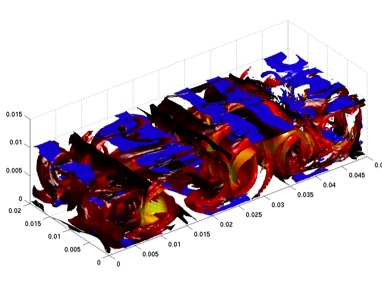With its visual nature, deep aesthetic appeal and immediate relation to every day life fluid mechanics seems like the ideal topic for the Web. Somehow, however, the mathematical side of fluid mechanics has not translated well to the Web. Non technical descriptions, especially as relating to weather and space science have a wealth of web material with excellent web pages put together by NASA, NCAR, and NOAA in the United States, the MET Office in the UK and Fisheries and Oceans Canada. While these sites are often interesting and can provide a diversion for quite some time they do not do a very good job of showing how mathematics is integrated into the study of fluid motions. The Wiki pages, on the other hand have problems presenting the aesthetic side of fluid dynamics and indeed do not introduce the necessary mathematics in a readable way.
So what does it take to understand the core of the mathematical description of fluid motion?
1) The key point is that many of the quantities vital to the description of fluids are vectors. This makes them tricky to visualize and mathematically, vector calculus must be used when computing both rates of change and “net” quantities like total transport using integrals.
2) The inherent nonlinearity in fluid flow makes exact solutions rare and computation a necessity.
3) Computational Fluid Dynamics is a data heavy science requiring both graphical and analytical techniques for the post-processing of data that comes out of the numerical models.
The Trouble with Fluids on the Web


